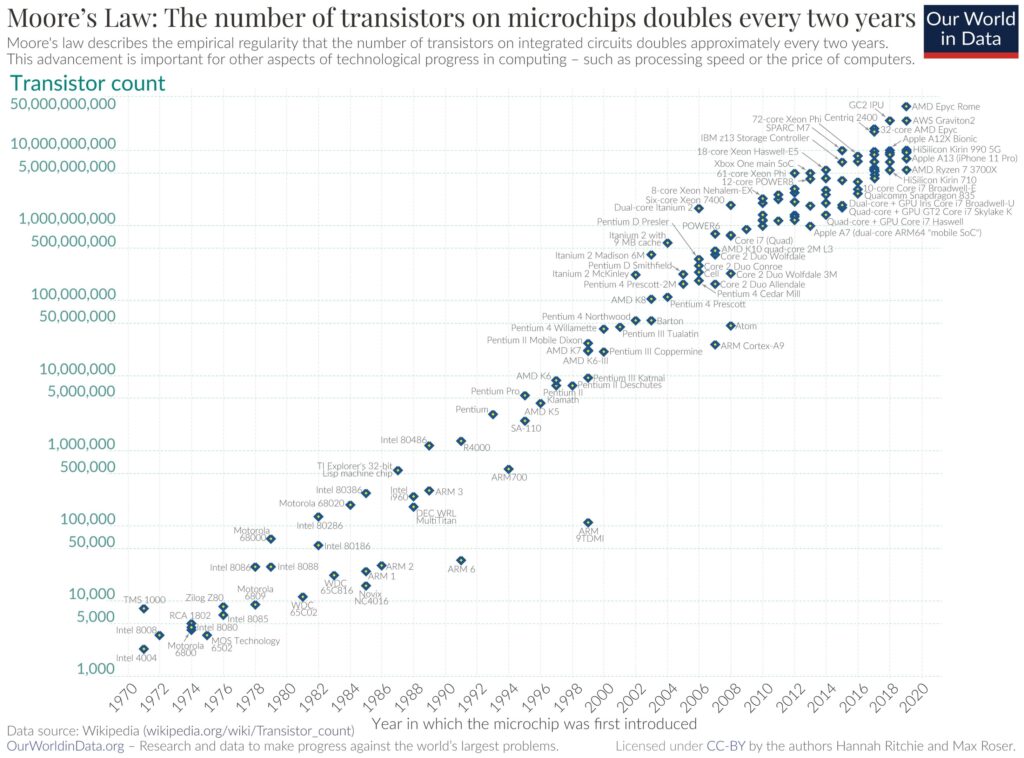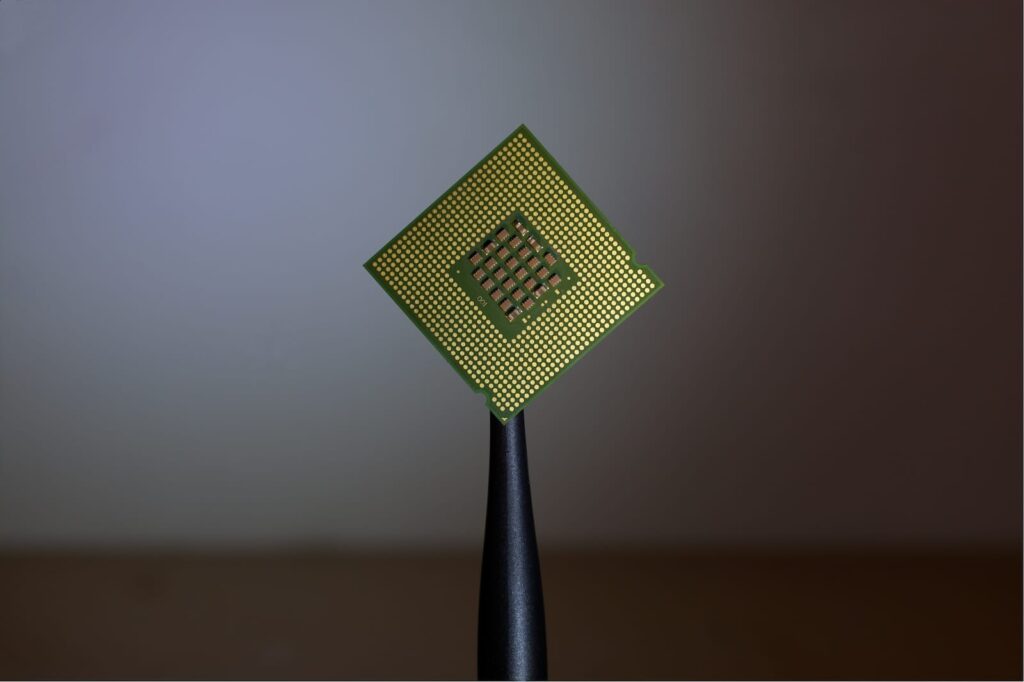Moore’s Law is one of the most fundamental concepts in the evolution of modern technology. Formulated in 1965 by Gordon Moore, co-founder of Intel, this “law” has served as a guiding principle for the semiconductor industry for over half a century, setting the pace for technological development and transforming the way people interact with technology.
What is Moore’s Law?
In its original form, Moore’s Law states that the number of transistors on an integrated circuit doubles approximately every two years, resulting in exponential increases in processing power and reductions in the cost per transistor. This concept was published in an article titled “Cramming More Components onto Integrated Circuits” in Electronics magazine, where Moore predicted this exponential trend would continue for at least a decade.
Although the law is not a physical law but an empirical observation, it has functioned as a self-fulfilling prophecy in the tech industry. Semiconductor manufacturers like Intel, AMD, and TSMC have heavily invested in research and development to keep pace with Moore’s Law, leading to unprecedented technological advancements.

History and Evolution of Moore’s Law
- Origins (1965): Gordon Moore observed that the number of transistors on a chip was doubling annually, significantly increasing the capacity of integrated circuits without increasing their size.
- Revision (1975): Moore revised his prediction, adjusting the doubling period to every two years due to the increasing complexity of circuits and emerging technological challenges.
- Broader Impact: While initially referring only to transistors on chips, Moore’s Law has also been associated with improvements in processor speeds, data storage, and energy efficiency.
- Contemporary Challenges: In the last decade, the industry has faced difficulties maintaining Moore’s Law due to physical limitations in transistor miniaturization and rising production costs. However, technologies like extreme ultraviolet (EUV) lithography and 3D transistor designs have enabled significant progress.
Impact of Moore’s Law on Technology
- Faster and More Accessible Computing: Moore’s Law has driven continuous reductions in chip manufacturing costs, making devices like smartphones, computers, and servers more affordable and powerful.
- Advancements in Artificial Intelligence and Big Data: The ability to process large volumes of data, essential for AI and data analytics, has grown exponentially thanks to Moore’s Law.
- Revolution in Data Storage: From mechanical hard drives to solid-state drives (SSD), storage density has dramatically increased, allowing more data to be stored in less space.
- Emerging Technologies: Fields like quantum computing, augmented reality, and the Internet of Things (IoT) have flourished due to the increasing processing power driven by Moore’s Law.
Current Challenges and the Future of Moore’s Law
As time progresses, the challenges of maintaining Moore’s Law have become more apparent:
- Physical Limits: As transistors approach the size of individual atoms, they face issues such as heat dissipation, quantum interference, and electrical stability.
- Rising Costs: Manufacturing chips with advanced technologies like 3-nanometer nodes requires massive investments in production infrastructure, limiting profitability.
- Innovative Solutions: To overcome these challenges, the industry is adopting innovative approaches, such as:
- 3D Transistors: Designs that stack transistors vertically to increase density.
- Advanced Materials: Using graphene and other materials to surpass silicon’s limitations.
- Heterogeneous Computing: Combining different types of processors (CPU, GPU, and FPGA) to enhance overall performance.
- Alternatives to Moore’s Law: While miniaturization may slow, chip manufacturers are exploring advancements in software, architecture, and emerging technologies like neuromorphic and quantum computing.
Conclusion
Moore’s Law has been a fundamental driver of modern technology, transforming industries and lives through continuous innovation. Despite significant challenges, its legacy lives on in how tech companies approach chip and system design.
The future of computing may not strictly adhere to Moore’s Law, but its influence on how we think about and advance technology will continue to shape the path toward new frontiers in the digital world.











